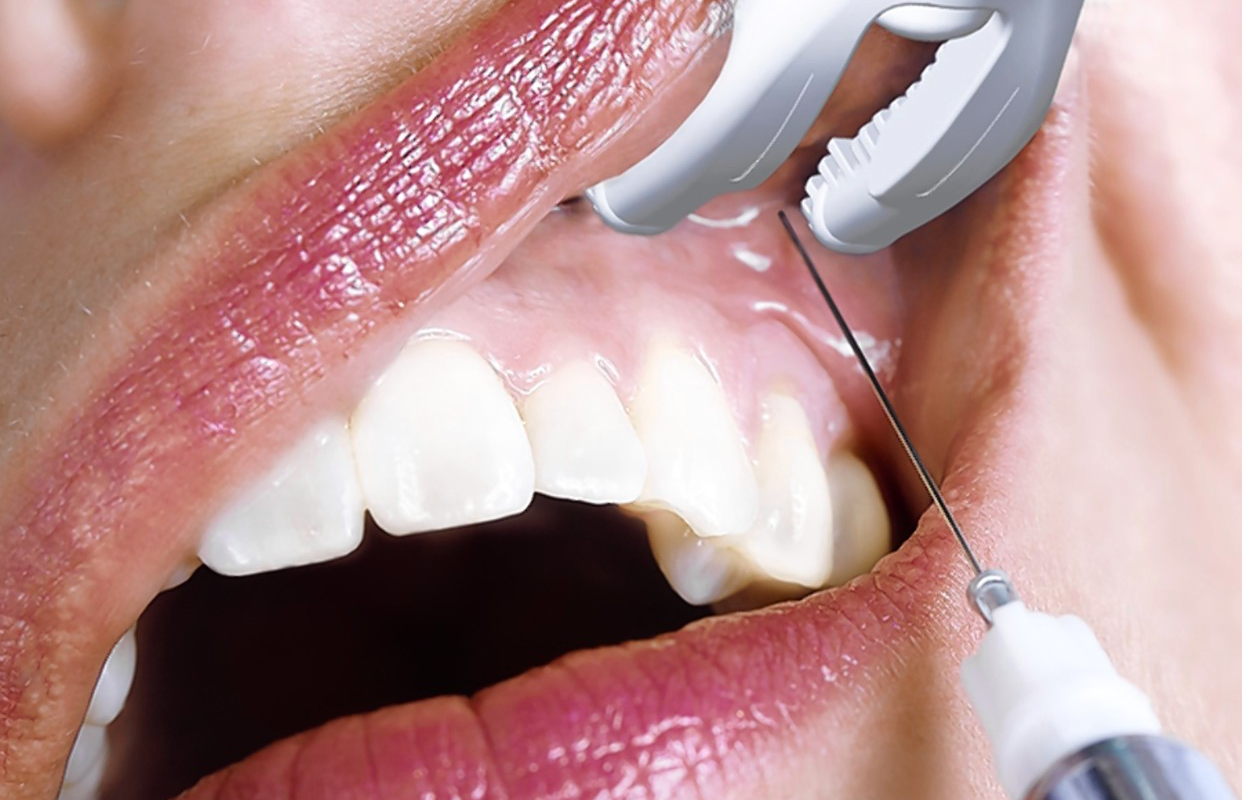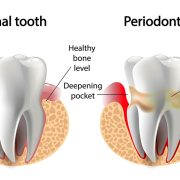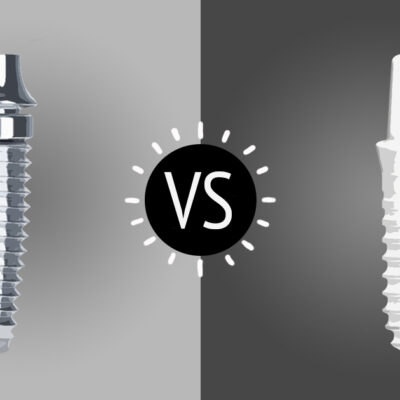Let’s get this out of the way right up front: It doesn’t take two oral surgeons to numb a patient. It takes one, but it takes lots of other people to make that happen. From assistants and hygienists to pharmacists and various ancillary staff, the entire ecosystem benefits when patients do not require repeated visits to complete their treatment. Online pre-appointment scheduling, digital records and communication tools all reduce redundant processes, enabling the team to spend more time on patients rather than on paperwork or multiple iterations of tasks. This is why it only takes one senior dentist to numb a patient at one visit.
What is double-mouth numbing?
Double-mouth numbing works by delivering the anesthetic to the front and sides of the mouth at the same time. This procedure is sometimes referred to as split-mouth or double-dose anaesthesia. Double-mouth numbing uses two syringes and two needles to deliver the anaesthetic.

One syringe is placed in each side of the mouth, and both needles deliver the anesthetic solution in the same amount into each half of the mouth. Some people may experience numbness on both sides of their mouth. Others may experience numbness on only one side, or on parts of both sides.
Two-mouth numbing with one syringe
The simplest way to understand the concept behind two-mouth numbing with one syringe is to start with the most basic oral surgery techniques. First, the surgeon will numb one side of the mouth — such as the right side — with a small needle.
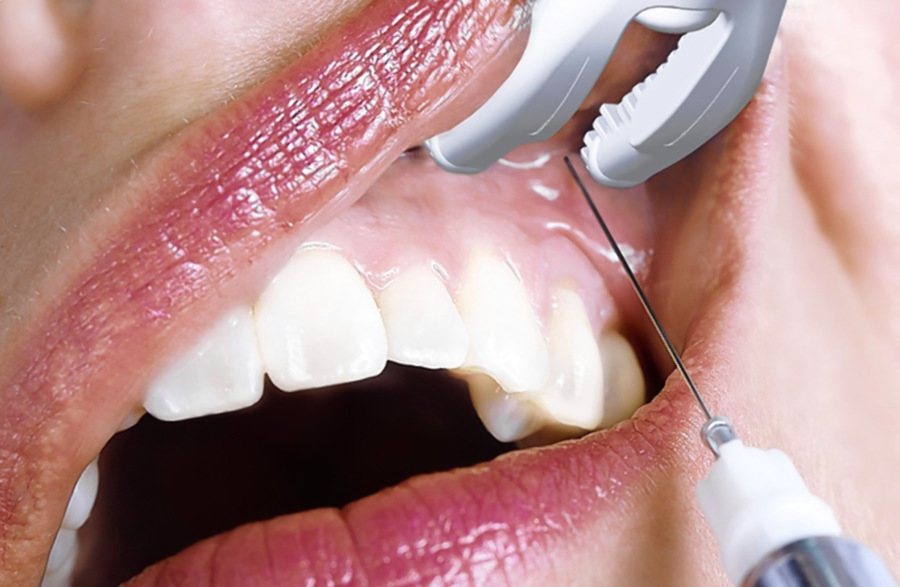
He or she will then use a long needle to cover the other half of the mouth, such as the left side of the patient’s lips, cheeks and gums. This method is called single-dose anesthesia, and it’s used in various procedures. Single-dose anesthesia requires the surgeon to “walk” the entire mouth, repeating the steps in every area of the patient’s cheeks and gums, as well as inside the lips and teeth. This can be time-consuming and uncomfortable for the patient.
How does a dentist numb a patient?
During the preoperative consultation, the team reviews the procedure with the patient to ensure that they are comfortable with the treatment plan. dentist and hygienist discuss the treatment plan with the patient and make sure that the patient is comfortable.
Dentist applies a topical anesthetic such as a gel or a liquid to the patient’s gums and lips. The dentist may also apply a numbing cream to the inside of the patient’s mouth and underneath the patient’s tongue. The team uses a needle to deliver the anesthetic to the soft tissues in the patient’s mouth and underneath the tongue. Next, the dentist and/or hygienist places the dental instrument in the patient’s mouth to scrape the gums.

The dentist then places one or more small pieces of rubber-like material under the patient’s gums and around the teeth. This material is called an intraoral block. The intraoral block prevents the patient’s tongue from moving and being painful. The dentist and/or hygienist then places wires into each of the patient’s teeth. The wires are connected to a machine called a dental unit.
The machine is connected to a syringe that holds the anesthetic solution. The dentist uses a foot pedal to control the machine and to inject the anesthetic solution through the wires connected to each tooth. This process is called a balanced anaesthesia technique. This technique is used in almost all surgeries in the mouth. During the balanced anesthesia technique, the dentist injects the correct amount of anesthetic into each tooth. The amount is just enough to prevent pain.
Benefits of double-mouth numbing
The main benefit of double-mouth numbing is decreased discomfort for the patient. This is due to less walking during the procedure, as well as cutting out the intraoral block from the procedure. The intraoral block is a piece of rubber-like material that the dentist places under the patient’s gums and around their teeth.
The intraoral block is uncomfortable because it blocks the patient’s saliva flow. With double-mouth numbing, the dentist is able to skip the intraoral block, which reduces discomfort during the procedure. Double-mouth numbing also enables the dentist to complete the procedure in one visit. With traditional single-dose anesthesia, the dentist may need to come back for a second visit to finish the procedure. The dentist may need to make a third visit if the first two appointments were not enough.
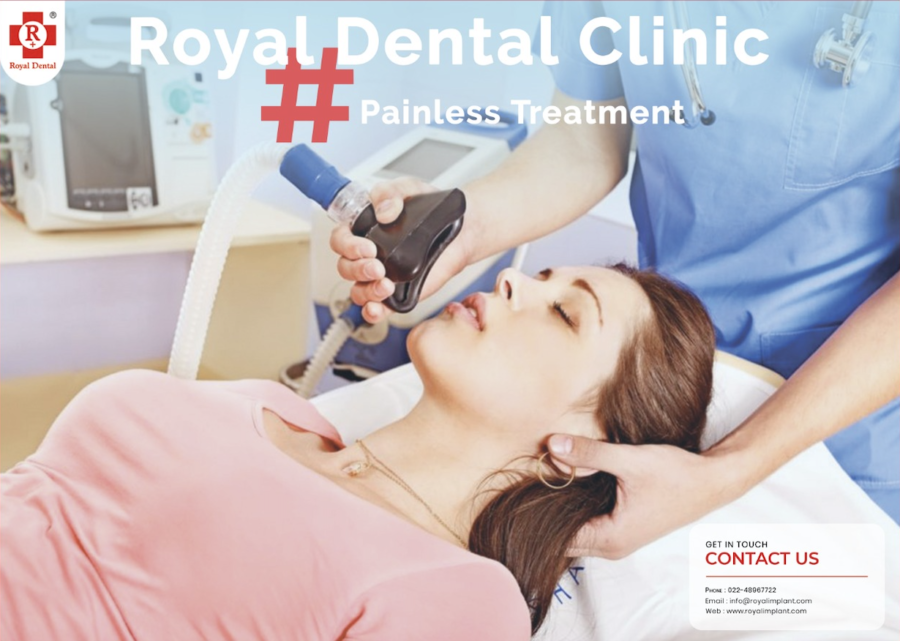
Caveats of double-mouth numbing
While double-mouth numbing may reduce discomfort and accelerate the treatment process, it is not risk-free. First, it is important to note that both syringes will have a higher chance of leaking. This is because a single syringe is designed to be used with only one area of the mouth. In fact, the syringe may leak more often in a double-mouth procedure.
It is also important to note that there is a risk of under- or over-anesthetizing the patient. This can result in the patient experiencing pain during the treatment or experiencing reduced sensation in their lips and cheeks after the treatment. Another concern is that double-mouth numbing may cause the patient to lose taste in both sides of their mouth. This can be a serious concern for patients with oral diseases such as periodontal disease or dental caries. Patients with these conditions rely on their taste buds to detect when the disease is getting worse.
Conclusion
Double-mouth numbing is an anesthetic technique that delivers the same dose of anesthetic to each side of a patient’s mouth during a dental procedure. This enables the patient to experience less discomfort during the procedure while reducing the number of visits they need to complete the treatment in its entirety.

